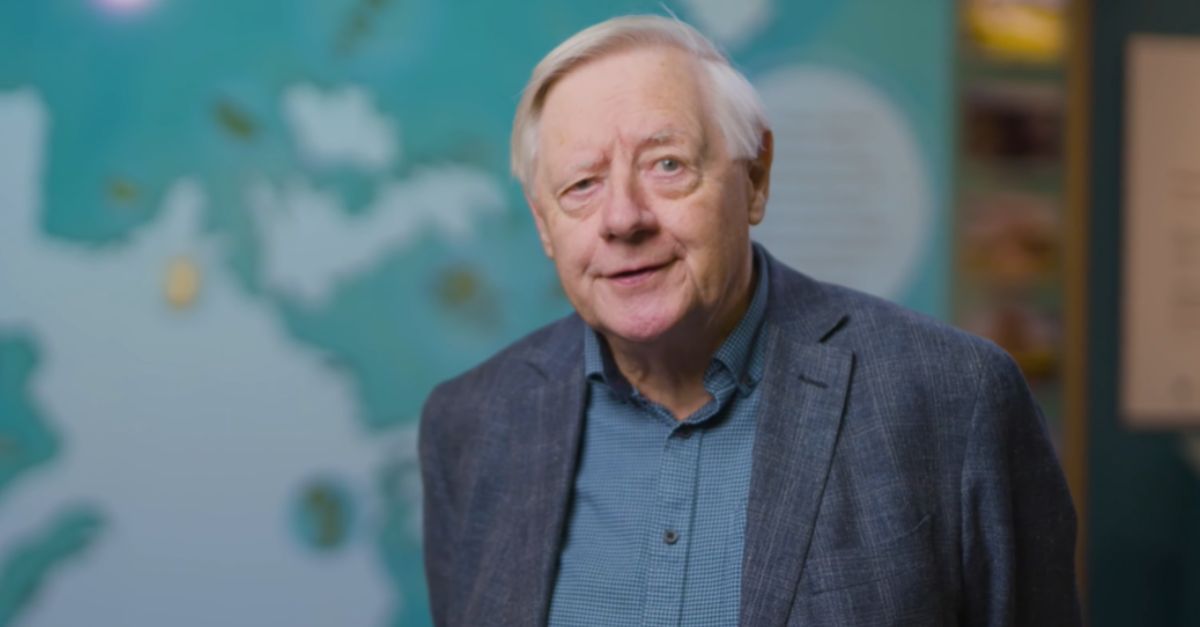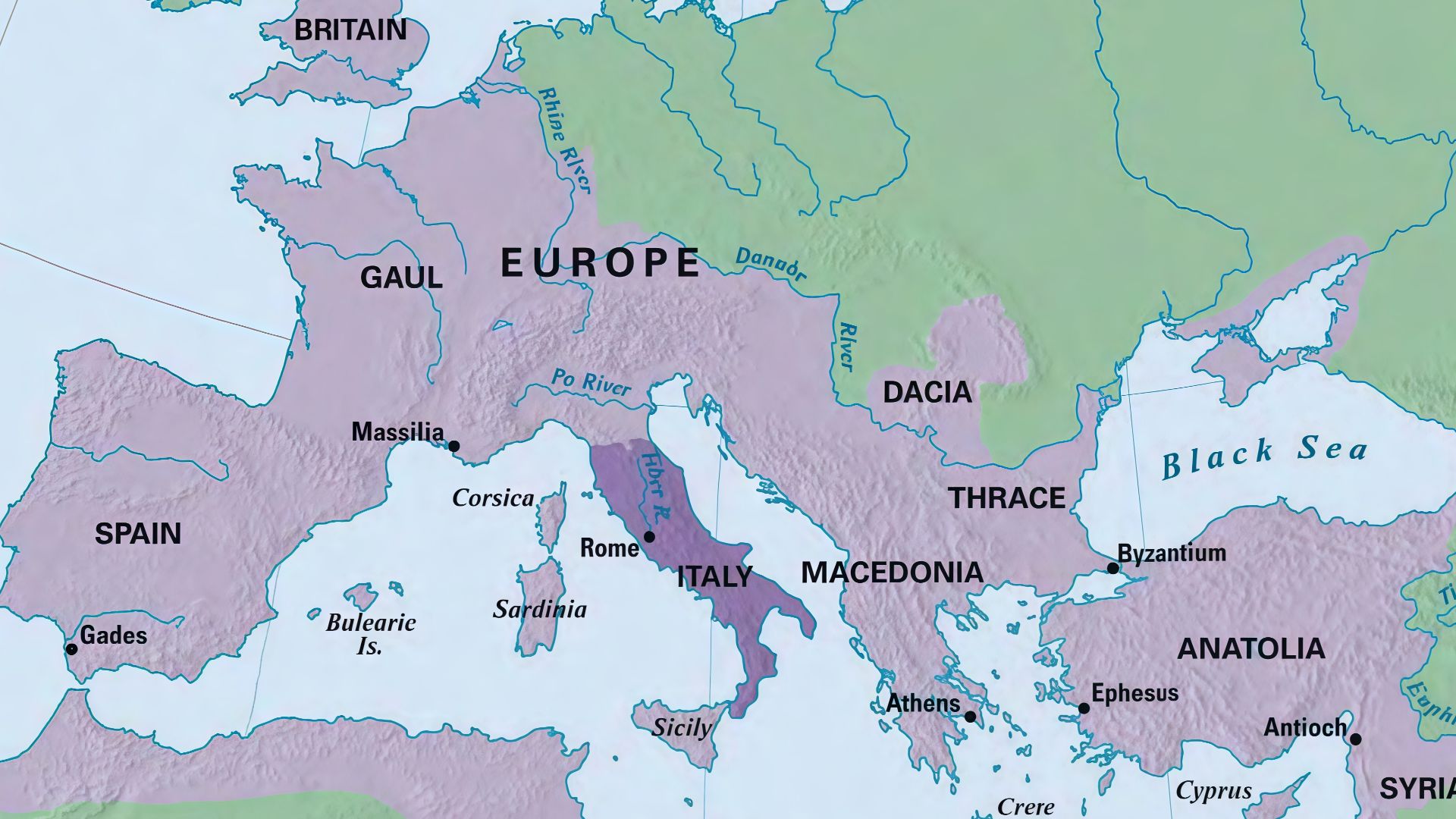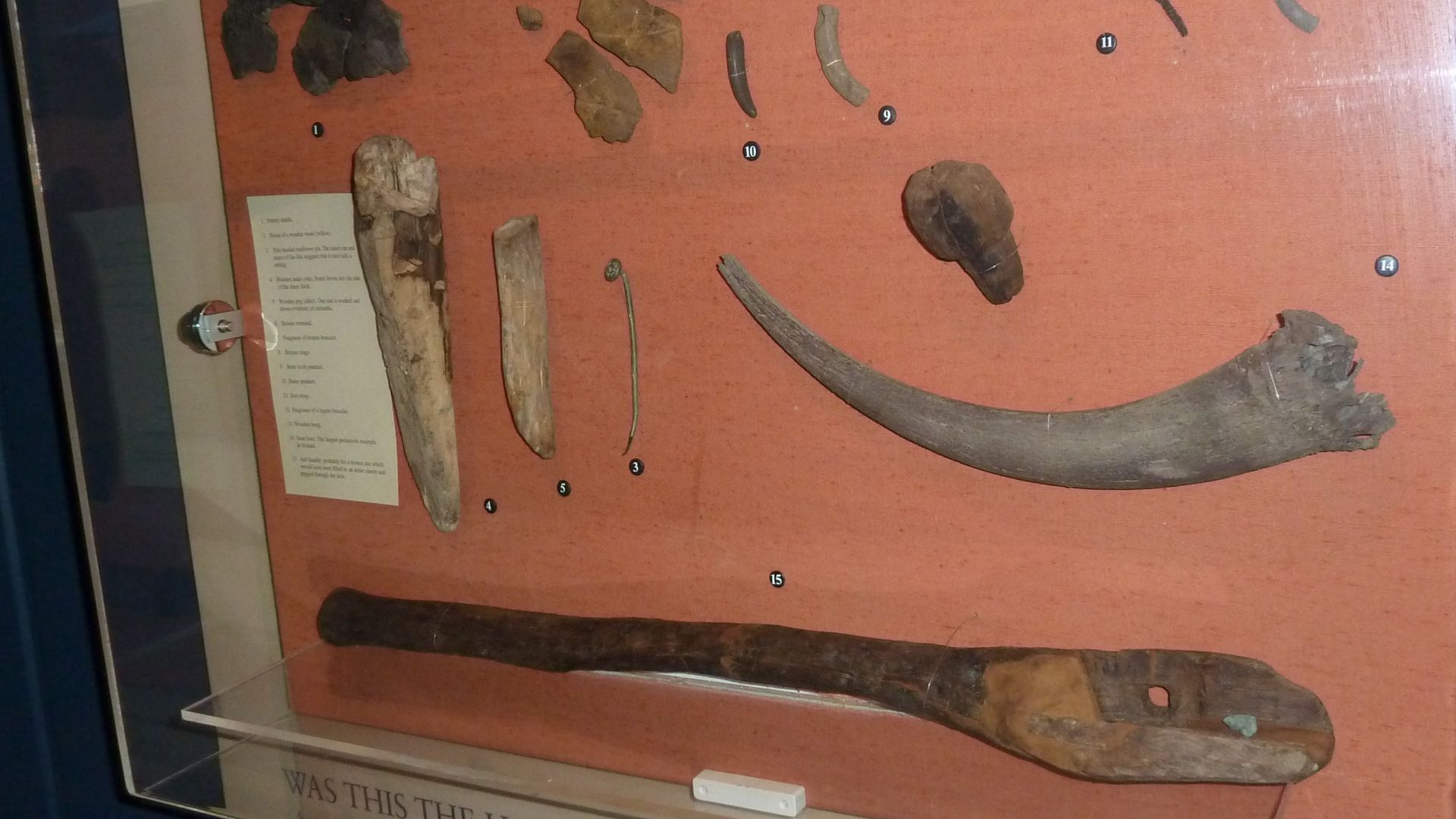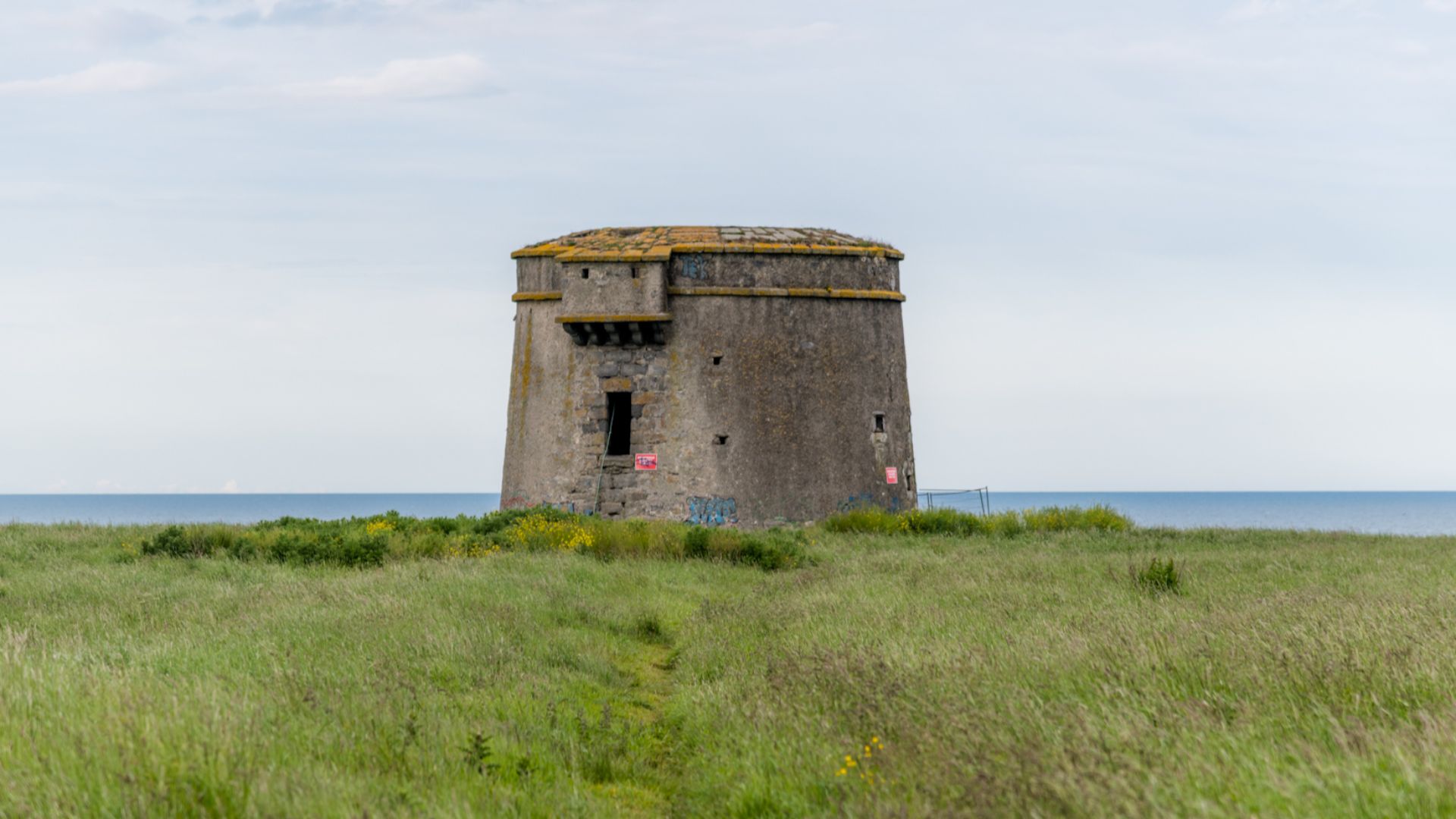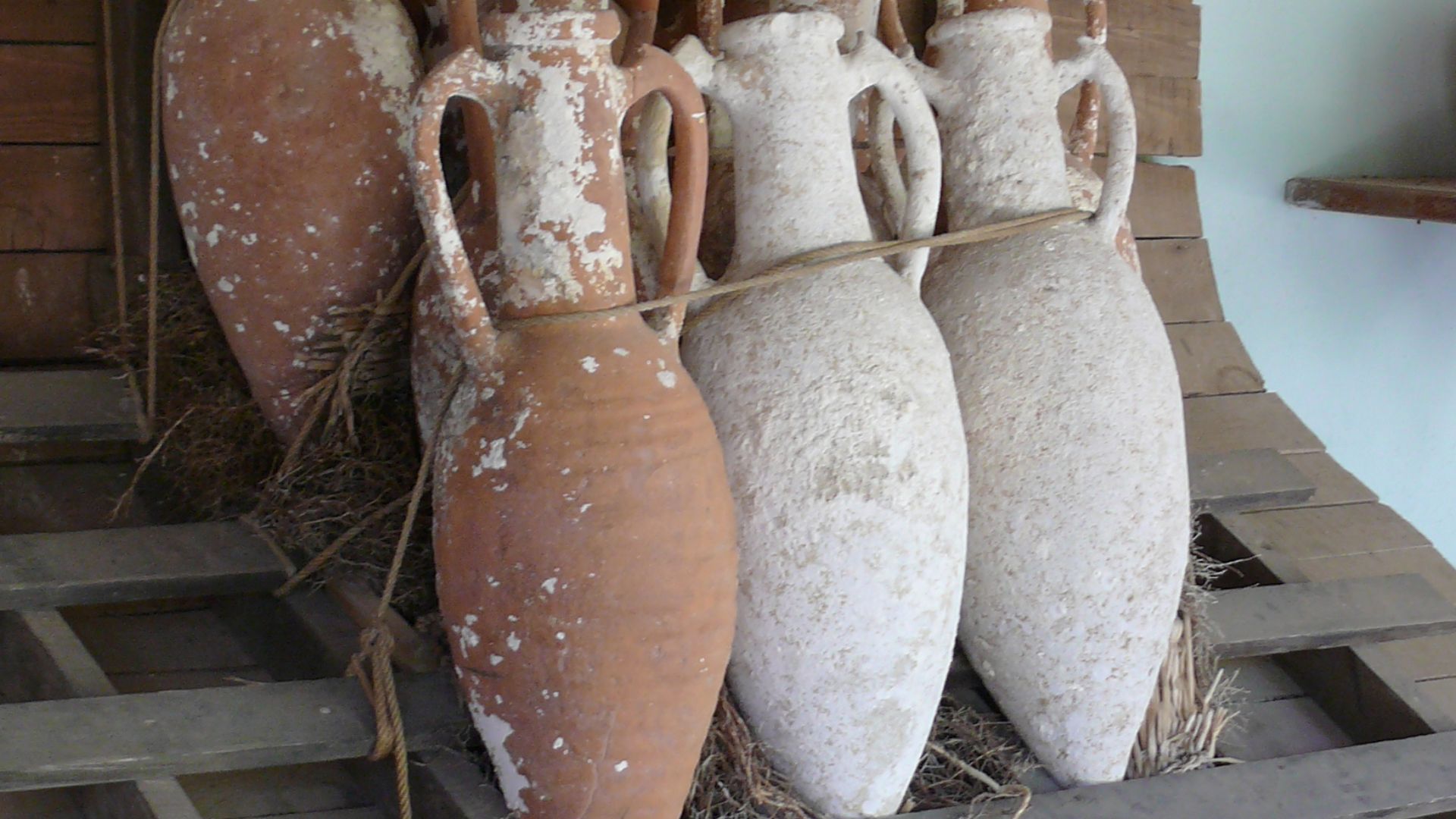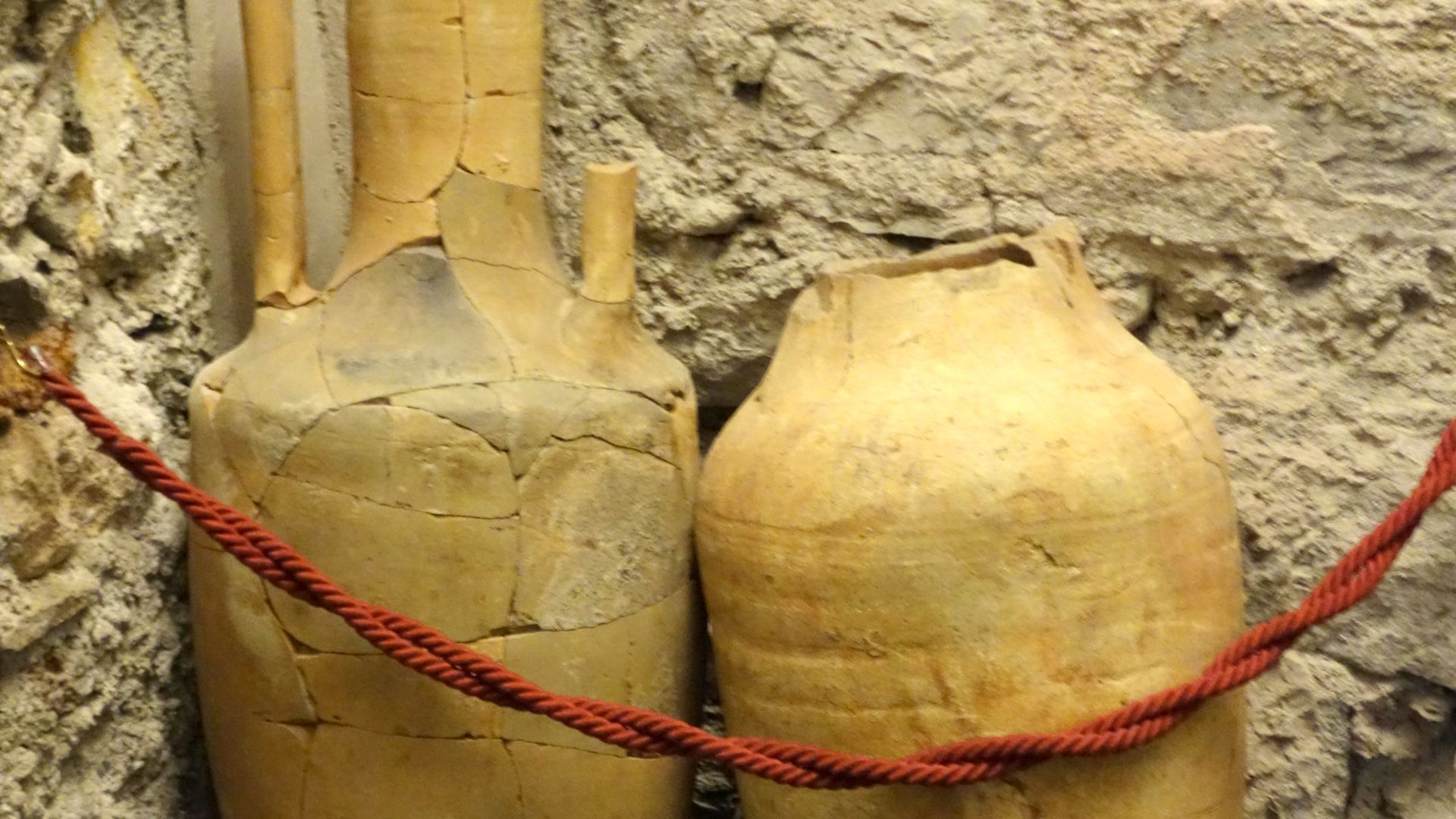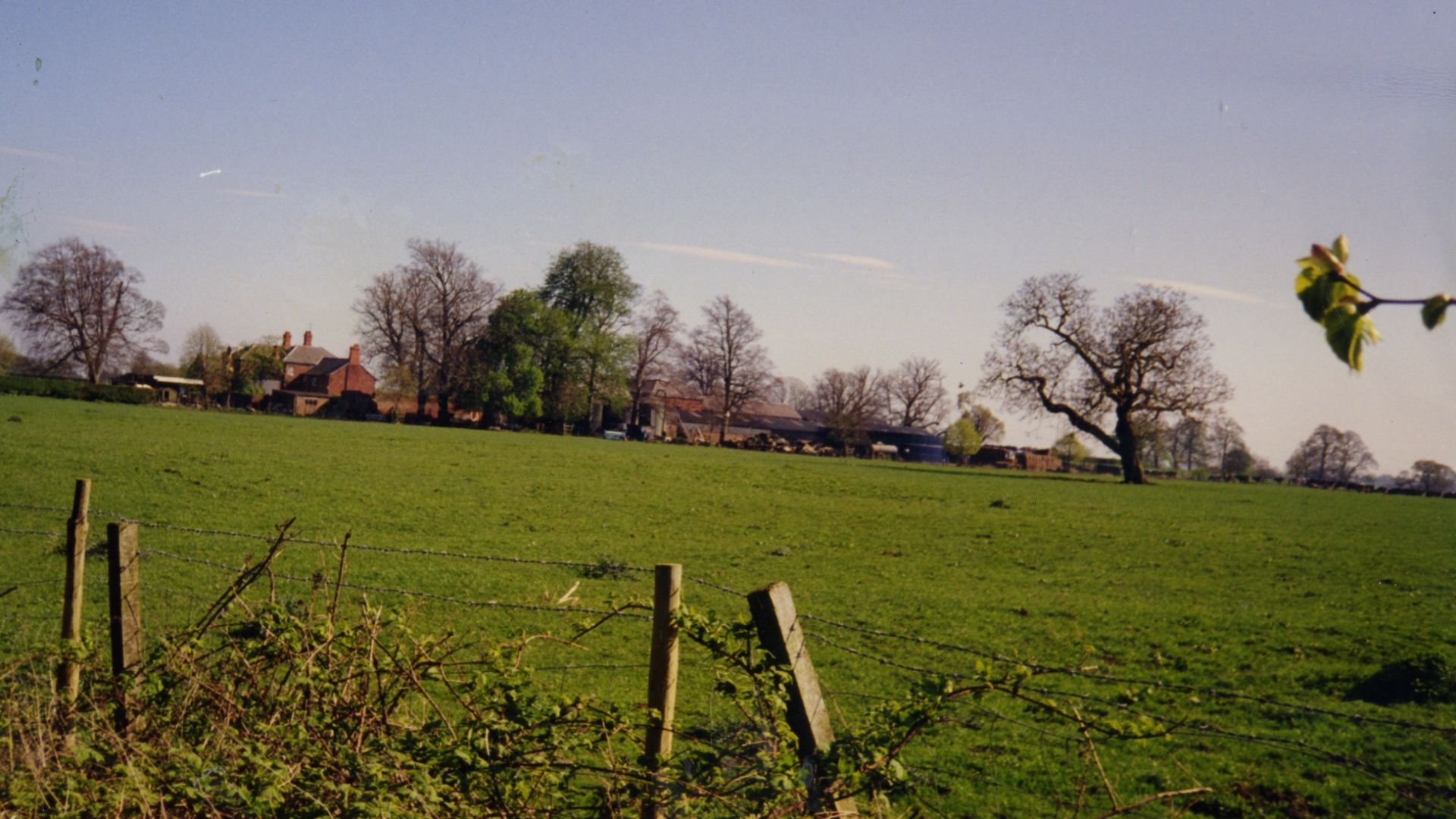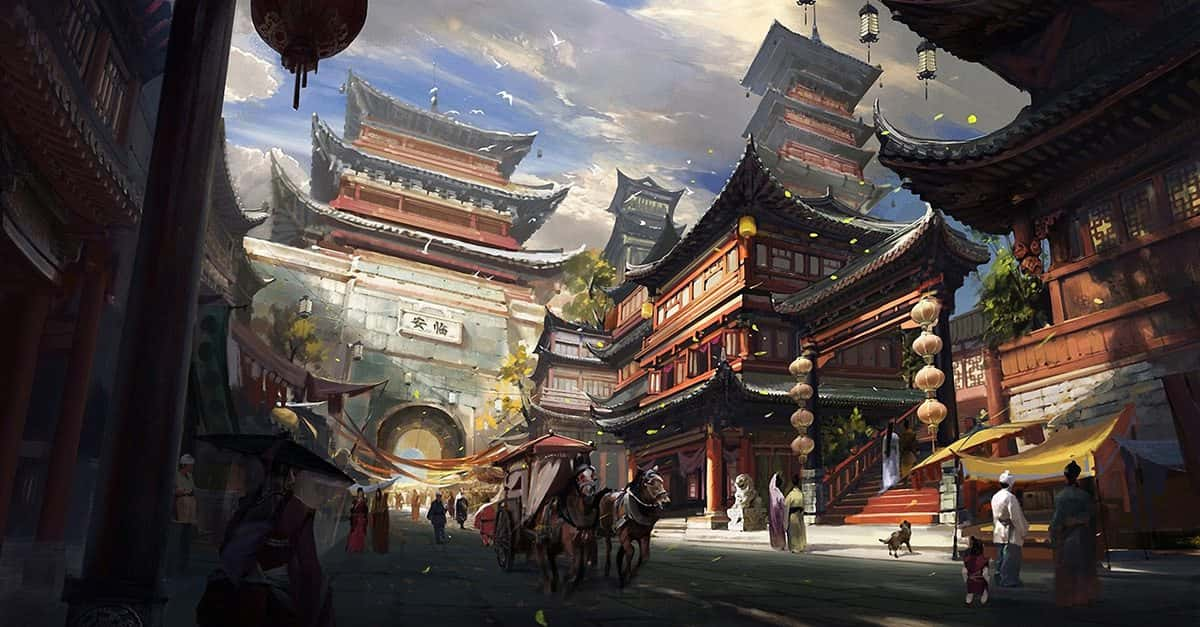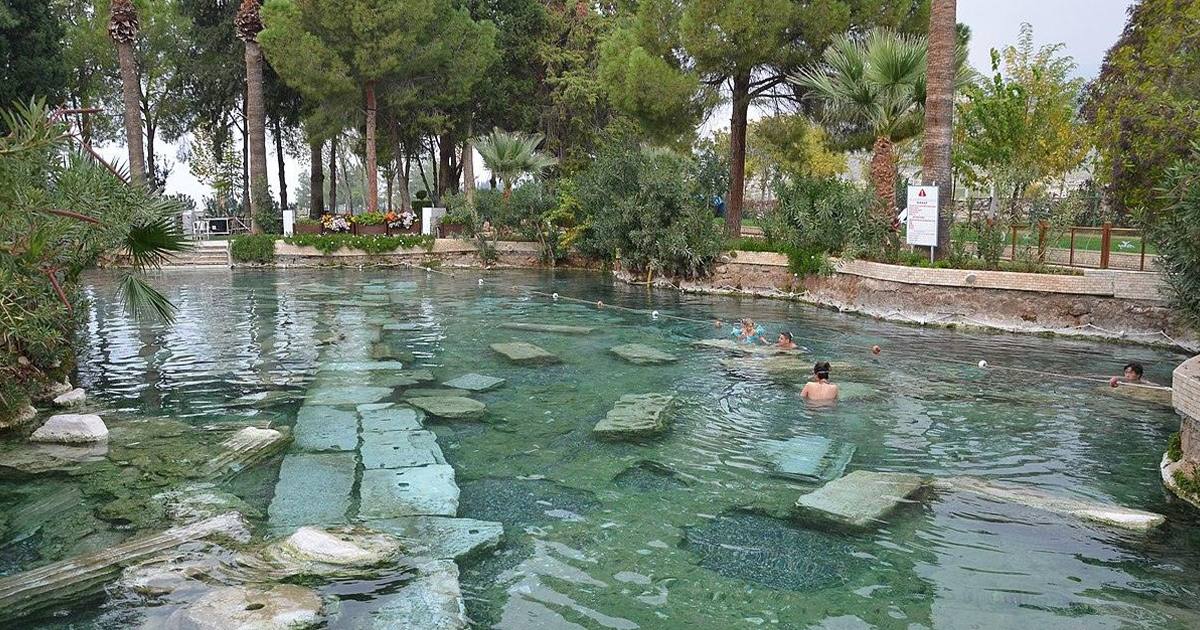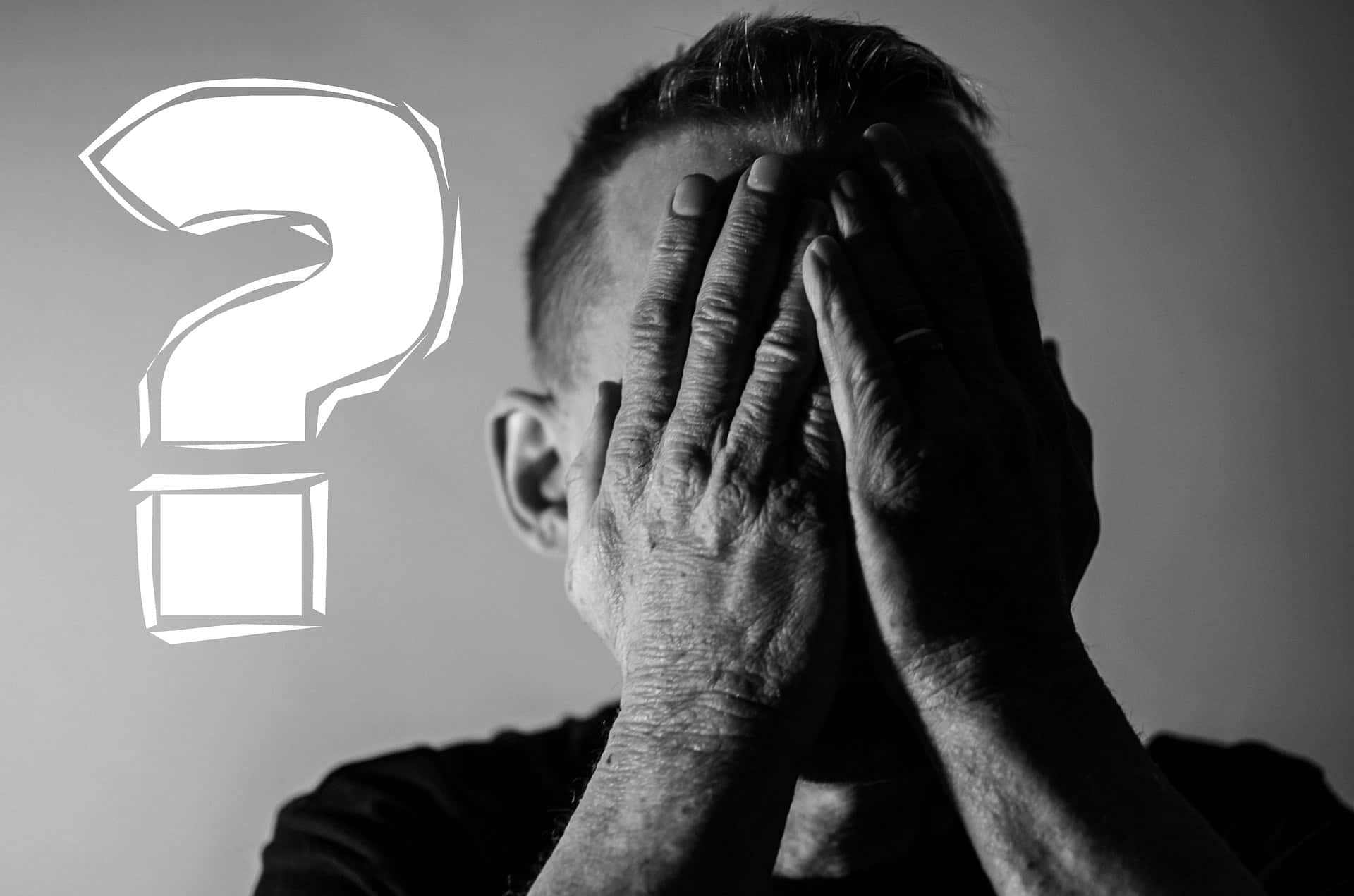Trade Without Empire
Ireland never bowed to Rome. And that’s why archaeologists at Drumanagh couldn't believe their eyes when they lifted a perfect Roman pot from the Dublin dirt.

Roman Empire
At its zenith around 2,000 years ago, the Roman Empire was the ancient world's superpower, stretching across three continents. The Empire controlled much of Europe, along with parts of Western Asia and North Africa, ruling over 70 million people.
Ireland Unconquered
Agricola, who ruled Roman Britain from AD 78 to AD 84, contemplated capturing Ireland because he thought it could be achieved with a single legion and auxiliary forces, according to the Roman historian Tacitus. But Ireland stayed as one of the few unconquered lands in Europe.
 Drawing by Brooke, engraved by S. Freeman, Wikimedia Commons
Drawing by Brooke, engraved by S. Freeman, Wikimedia Commons
Trade Routes
Roman cuisine, which included new herbs and spices, nuts like almonds, and fruits like grapes, dates, and figs, became widely accessible because of the Empire's broad commerce channels. They developed business ties with Ireland, even though they were never able to conquer it.
Iron Age
The Iron Age, which spanned roughly 500 BC to 400 AD, is usually linked to promontory forts. In Irish prehistory, this was a pivotal time when tribes built fortified villages and acquired advanced metalworking techniques. Ireland's society developed with unique tribal groupings during the Iron Age.
Drumanagh Site
Drumanagh is the site of a large promontory fort defined by a series of earthworks—three closely-spaced earthen banks and ditches, located near Loughshinny village in north County Dublin. The site covers approximately 200,000 square meters on a dramatic headland overlooking the Irish Sea.
May Of 2025
The pot was unearthed from an archaeological excavation at Drumanagh, near the village of Loughshinny, Co Dublin, during the current season of the Digging Drumanagh project. The discovery of the complete vessel was recently made during the current season running from 14–28 May.
 Digging Drumanagh 2025 - Fingal Community Archaeology Programme by Fingal County Council
Digging Drumanagh 2025 - Fingal Community Archaeology Programme by Fingal County Council
Intact Pot
It is said to be the earliest undamaged Roman pot ever discovered in Ireland by archaeologists. Because of its complete, undamaged state, the ceramic vessel is extremely uncommon and valuable to science. Its surface and shape were remarkably well-preserved upon discovery.
 Digging Drumanagh 2025 - Fingal Community Archaeology Programme by Fingal County Council
Digging Drumanagh 2025 - Fingal Community Archaeology Programme by Fingal County Council
Excavation Team
The dig is led by Christine Baker, and the team includes professional archaeologists and volunteers from the local community and beyond. Fingal County Council Heritage Officer and Archaeologist Christine Baker said: "We're breathless with the sheer excitement of it all". The collaborative project brought together dozens of volunteers.
 Christine Baker - Heritage Week 2 minute talk by Fingal County Council
Christine Baker - Heritage Week 2 minute talk by Fingal County Council
Trench Location
In one trench, the team found the intact upside-down pot next to a large fragment of an amphora, including the neck and rim. The excavation targeted an area with unusual features previously identified through geophysical surveys. They found fragments of Roman amphorae right under the surface.
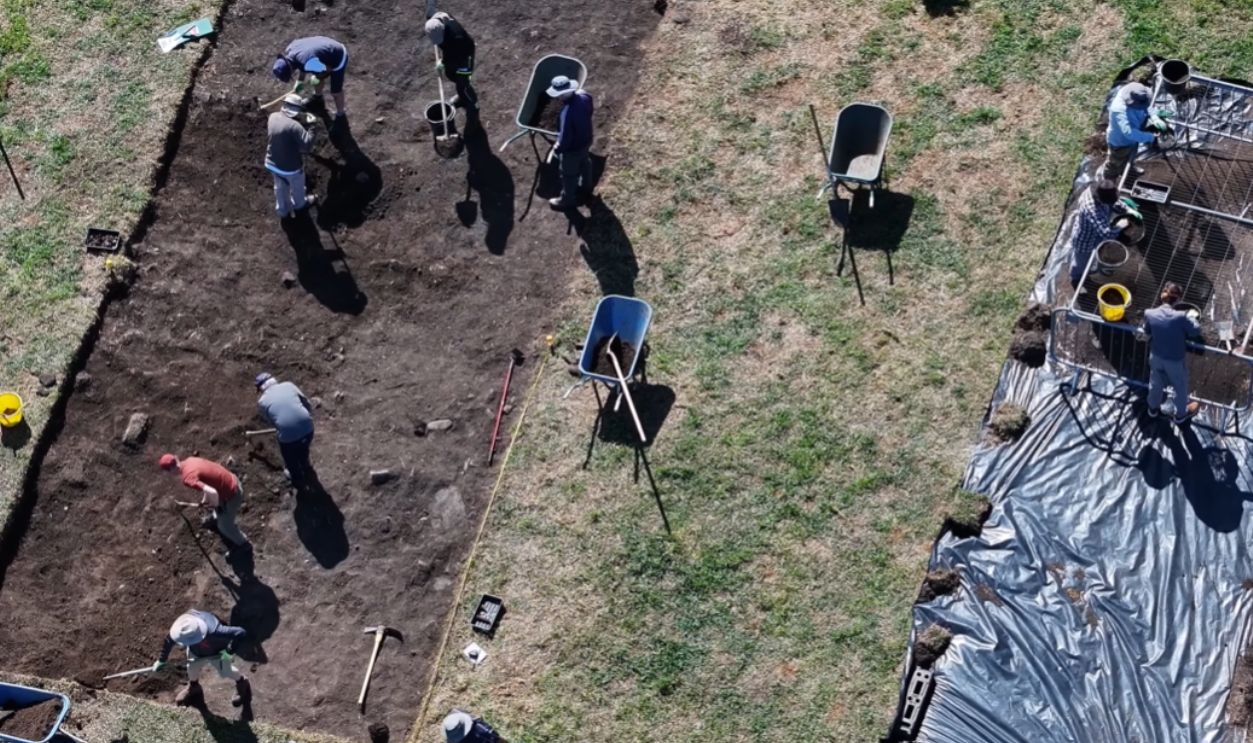 Digging Drumanagh 2025 - Fingal Community Archaeology Programme by Fingal County Council
Digging Drumanagh 2025 - Fingal Community Archaeology Programme by Fingal County Council
First Ever
"This is the first ever intact Roman pot excavated in Ireland. We have found five or six different types of Roman artefacts here, including the neck of an amphora. But nobody has ever seen a pot like this before in Ireland," Baker emphasized. The discovery represents a watershed moment in Irish archaeology.
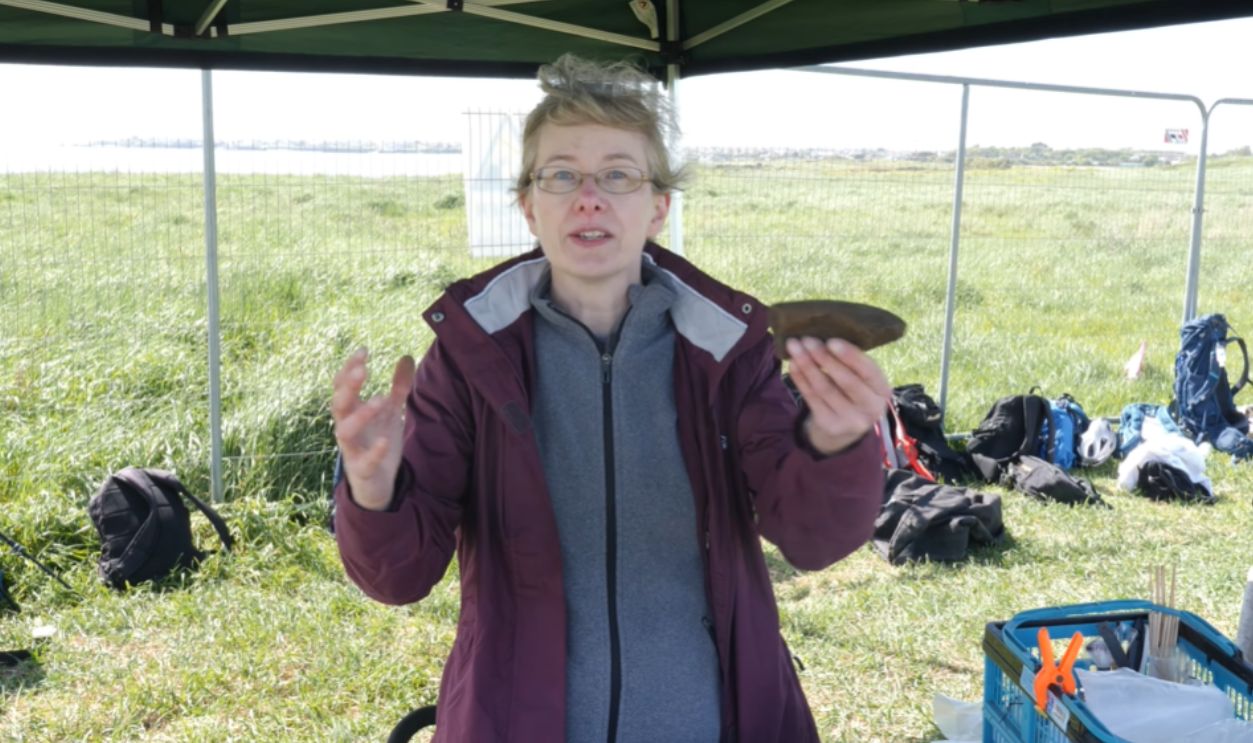 Digging Drumanagh 2025 - Fingal Community Archaeology Programme by Fingal County Council
Digging Drumanagh 2025 - Fingal Community Archaeology Programme by Fingal County Council
Pottery Type
The vessel represents a complete Roman ceramic container from the first century AD, crafted using traditional potter's wheel techniques. The number and variety of finds attest to significant commercial contact between ancient Ireland and the Roman Empire. Roman pottery came in various forms, including fine tablewares, storage vessels, and amphorae.
First Century
The rare find is dated to around the first century AD, coinciding with Rome's consolidation of power in Britain. This timeframe marks the peak of Roman-Irish trade relations when Drumanagh sustained contact with Roman Britain, especially the Chester-Wirral area, during the first two centuries of Roman rule.
Upside Down
The team found the intact upside-down pot next to a large fragment of an amphora in its archaeological context. This inverted position suggests deliberate placement rather than accidental loss, possibly indicating ritual deposition or careful storage practices. The pot's orientation and association with other Roman materials provide archaeologists with important contextual information.
Preservation State
The ceramic vessel was discovered intact, with its surface and shape exceptionally well-preserved. "It's not just the object, but the fact that it was unearthed in its original setting that gives us a unique window into life in early Ireland," noted archaeologist Dr Roseanne Schot.
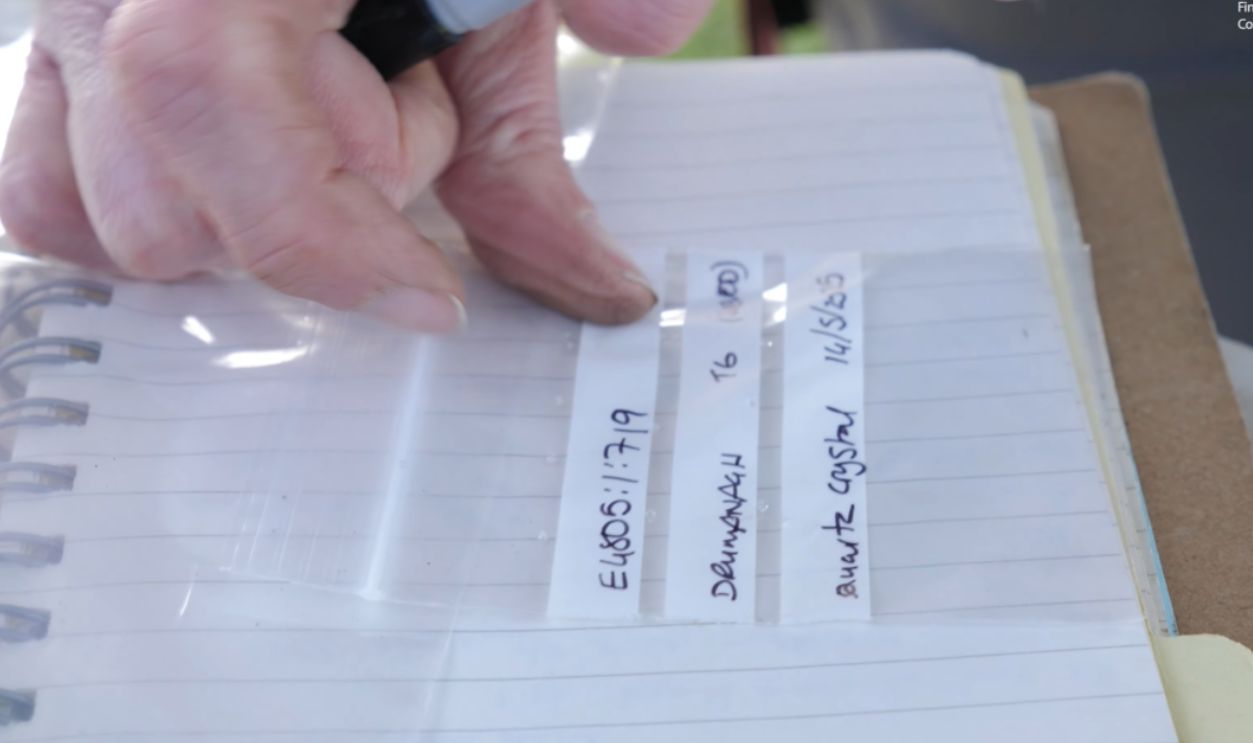 Digging Drumanagh 2025 - Fingal Community Archaeology Programme by Fingal County Council
Digging Drumanagh 2025 - Fingal Community Archaeology Programme by Fingal County Council
Museum Transfer
The intact pot is now being sent to the National Museum of Ireland, where further analysis and conservation will be carried out. The newly found intact pot has been moved to the National Museum of Ireland, where conservation work and further analysis continue.
 Photograph by Mike Peel (www.mikepeel.net)., Wikimedia Commons
Photograph by Mike Peel (www.mikepeel.net)., Wikimedia Commons
Fig Discovery
During an earlier season of excavation, a 2,000-year-old charred fig was recovered and identified as the oldest exotic fruit ever found in Ireland. Associate Professor Meriel McClatchie of UCD's Ancient Foods research group confirmed the fig's antiquity. The Mediterranean fruit provided tantalizing evidence of long-distance trade networks.
 Unlocking the story of prehistoric food storage by Bailey & Blake Video Productions
Unlocking the story of prehistoric food storage by Bailey & Blake Video Productions
Spelt Wheat
Analysis showed that there were notable amounts of spelt wheat, a cereal that was common in Roman Britain but uncommon in ancient Ireland. Burnt spelt wheat has been produced in significant amounts in Drumanagh because, while it was uncommon in Iron Age Ireland, this grain was widespread in Roman Britain.
 Robert Flogaus-Faust, Wikimedia Commons
Robert Flogaus-Faust, Wikimedia Commons
Olive Oil
Drumanagh has produced remnants of olive oil, a quintessential Roman commodity transported in specialized amphorae across vast distances. Archaeologists unearthed Dressel 20 pottery from Baetica in Southern Spain, vessels specifically designed for shipping olive oil from Spanish provinces. People at Drumanagh were consuming spelt bread, olive oil, and figs.
 stu_spivack, Wikimedia Commons
stu_spivack, Wikimedia Commons
Amphora Necks
"We have found five or six different types of Roman artefacts here, including the neck of an amphora", Christine Baker explained. They discovered fragments of Roman amphorae just beneath the surface throughout the excavation area. These large two-handled storage vessels were the shipping containers of the ancient world.
 Creator:Red-Line Painter (Attributed to the manner of the Red-Line Painter), Wikimedia Commons
Creator:Red-Line Painter (Attributed to the manner of the Red-Line Painter), Wikimedia Commons
Glass Artifacts
Previous archaeological work at Drumanagh has demonstrated that artifacts include glass beads, gaming pieces, and a bone comb, which means people were drinking from glass vessels and fine ceramic cups at this windswept coastal settlement. These glass objects required sophisticated manufacturing techniques and were considered luxury items.
Chester Connection
The evidence pointed to a connection with the Chester/Wirral area of Roman Britain during the first 200 years of the Roman conquest, according to Christine Baker. The material evidence indicates that it was an important trading post with the Roman Empire during the Iron Age.
Lambay Burials
Roman brooches and beautiful metalware of a style, also found in late first-century AD Roman Britain, were uncovered in a collection of burials on Lambay Island, near the coast of Drumanagh. These burial goods imply that a small number of refugees, perhaps from Brigantia, are represented at the site.
 Anonymous (Irish Celtic)Unknown author, Wikimedia Commons
Anonymous (Irish Celtic)Unknown author, Wikimedia Commons
Lambay Burials (Cont.)
These folks probably fled the Roman conquest around AD 71 to 74. So, the burials and artifacts are interpreted as evidence of early Romano-British interaction and settlement on Lambay Island, indicating that it was a point of contact or refuge during this turbulent period.
 Joseph Mischyshyn, Wikimedia Commons
Joseph Mischyshyn, Wikimedia Commons
Historical Impact
Dr John Waddell, an expert in Irish archaeology and a part of the Royal Irish Academy, wrote: “This discovery at Drumanagh is a game-changer. It provides tangible evidence of Roman presence and influence in Ireland, not just through trade goods but through the artefacts themselves”.

